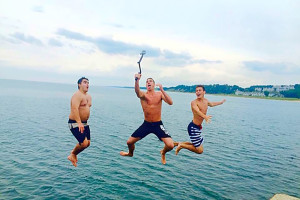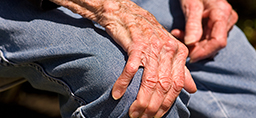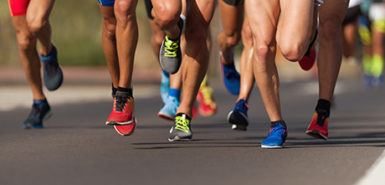
Thomas Stid was always active.
In high school in Holland, Michigan, Stid played soccer, tennis and golf. But when the 19-year-old joined the Michigan Army National Guard after graduating in June 2014, he took it to another level.
“Last summer, I ran three or four miles everyday just to get in shape,” Stid said.
By the time he graduated from Fort Benning in October, Stid felt significant pain in his right hip. It turned out he had torn cartilage and needed arthroscopic surgery.
While hip issues used to be an ailment almost exclusively associated with the elderly, in recent years those injuries have risen significantly among younger patients.
The annual number of total and partial hip replacements jumped 56 percent, from 263,000 to 411,000, between 1998 and 2011, according to the latest figures compiled by the American Academy of Orthopaedic Surgeons. In the youngest age group, ages 45 to 54, that number increased to 200 percent.
Although even younger adults weren’t studied, they have seen a similar drastic rise in hip replacements, hip surgeries and hip ailments, according to doctors who specialize in that field.
“Two factors have really contributed to this trend,” said Olusanjo Adeoye, MD, who specializes in orthopedic sports medicine at Spectrum Health. “The first is the rise of fitness culture, in which we’re seeing a lot more volume of individuals participating in recreational sports, CrossFit, various runs, 5Ks, 10Ks.
“That’s driving a lot of the injuries we see in hip joints,” he said.

Dr. Adeoye, the only West Michigan doctor fellowship-trained in hip arthroscopy and hip preservation, also said the rise of one-sport athletes has led to many of the hip-related injuries in younger patients.
“That was very unusual until five or 10 years ago,” he said. “The three-sport athlete was great and something to look up to, something to aspire to.
“Single-sport athletes are essentially doing the same repetitive motions year-round,” he added. “That lack of cross-training creates more issues in all joints, including the hip.”
For Stid, a femoral acetabular impingement turned out to be his major issue. This condition occurs when the ball of the femur doesn’t fit perfectly into the hip socket.
It can be caused by misshapen bones, spurs that develop over time or activities that damage the cartilage—known as the labrum—that seals the socket. Famous athletes like Olympic sprinter Tyson Gay and All-Star baseball player Alex Rodriguez have suffered labrum tears in recent years.
Dr. Adeoye says high-level activity in sports that put a lot of stress on the hip—soccer players, basketball players (think defensive positions), hockey goalies and weight-lifters—make young athletes still growing into their bodies particularly susceptible and can cause such impingements.
“Really explosive motions from deep squatting positions, lunges, activity like that, puts a lot of pressure on the hip joint,” Dr. Adeoye said.
There are ways athletes can protect themselves.
Dr. Adeoye recommends taking at least one month after each season is done, instead of, for example, going straight from school athletics into a summer league. Low-impact activities such as yoga and pilates can also help give the hip joint more flexibility and a different work-out. And over-the-counter anti-inflammatory medications like Aleve can also be effective in conjunction with rest, Dr. Adeoye said.
Surgical options have also improved. In the past 10 to 15 years, arthroscopic hip surgery—using tubes and cameras to go into hip joints and repair cartilage—has become a much more viable and successful treatment because of the improvements in technology.
Stid, on whom Dr. Adeoye performed arthroscopic surgery on Jan. 26 to repair torn cartilage, says he no longer feels the stinging pain in his hip.
“Now I’m doing great: Swimming, biking, running—doing everything I did before,” Stid said. “The doctors told me once I reach 90 percent recovery, it might be a full year until I get from there to 100 percent. I’m still a little weak, a little achy here and there after a workout, but that’s just lack of strength.
“It definitely doesn’t feel the same as last summer,” he said. “It’s much better. I’m pretty happy with how strong I feel.”
 /a>
/a>
 /a>
/a>
 /a>
/a>
I enjoyed reading about hip injuries and treatment. At 83 years of age I am having some problems with one of my hips. Time to see my Doctor…….Thanks